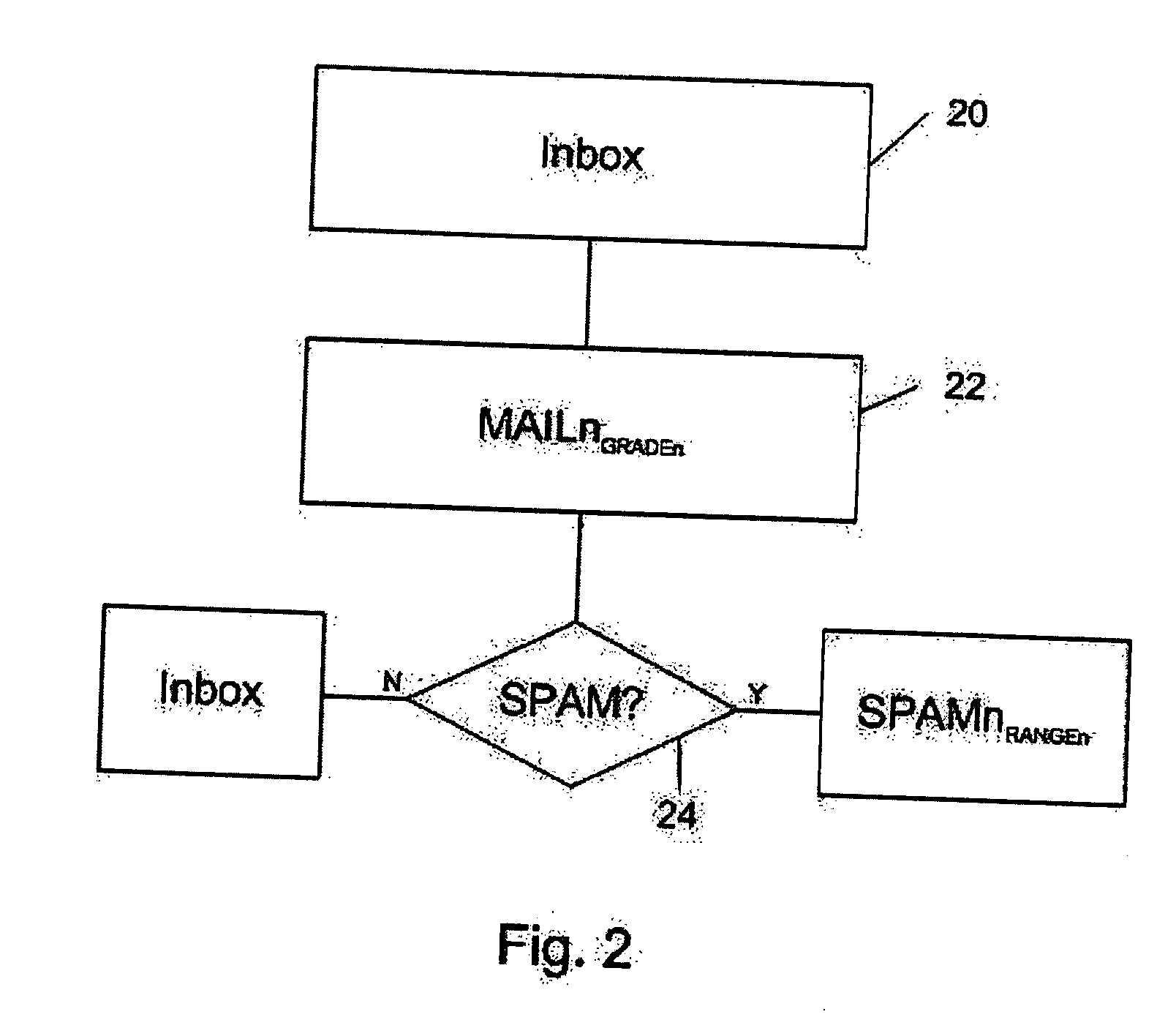Classification of electronic mail into multiple directories based upon their spam-like properties
a technology of electronic mail and spam-like properties, applied in the field of classification of electronic mail into multiple directories based on their spam-like properties, can solve the problem that the recipient may not necessarily review the mail in the directory with the highest level of spaminess, and achieve the effect of high degree of confidence and better determining spaminess
- Summary
- Abstract
- Description
- Claims
- Application Information
AI Technical Summary
Benefits of technology
Problems solved by technology
Method used
Image
Examples
Embodiment Construction
[0027] Referring to FIG. 1, electronic mail (“e-mail”) sent between or among individuals and companies throughout the world travels via the Internet, generally indicated by numeral 10, composed of a plurality of interconnected backbone and other sites that transfer mail from one mail server 12a uniquely identified by an Internet protocol (“IP”) address to another mail server 12b uniquely identified by another IP address, each IP address being conveniently mapped to an upper-level domain name. Each domain mail server 12 typically includes one or more client mailboxes 14.
[0028] Each client mailbox 14 includes at least an Inbox 16 into which is delivered incoming e-mail addressed to the owner of the Inbox 16 as the intended recipient of the e-mail (hereinafter “recipient”). The recipient reads the e-mails contained within the Inbox 16 and then typically deletes the e-mail or copies or moves it to other directories within the mailbox.
[0029] According to the present invention, in addit...
PUM
 Login to View More
Login to View More Abstract
Description
Claims
Application Information
 Login to View More
Login to View More - R&D
- Intellectual Property
- Life Sciences
- Materials
- Tech Scout
- Unparalleled Data Quality
- Higher Quality Content
- 60% Fewer Hallucinations
Browse by: Latest US Patents, China's latest patents, Technical Efficacy Thesaurus, Application Domain, Technology Topic, Popular Technical Reports.
© 2025 PatSnap. All rights reserved.Legal|Privacy policy|Modern Slavery Act Transparency Statement|Sitemap|About US| Contact US: help@patsnap.com



